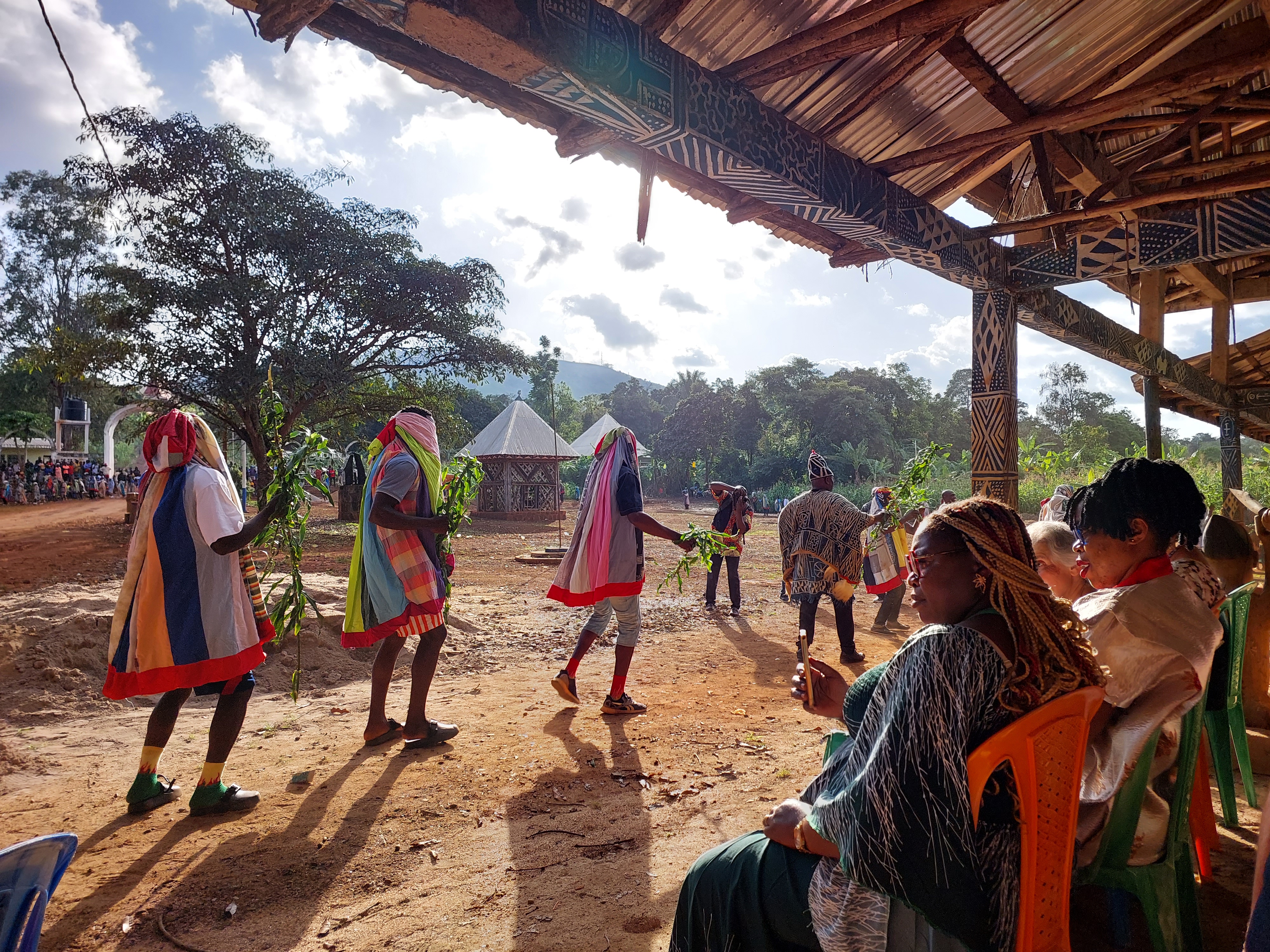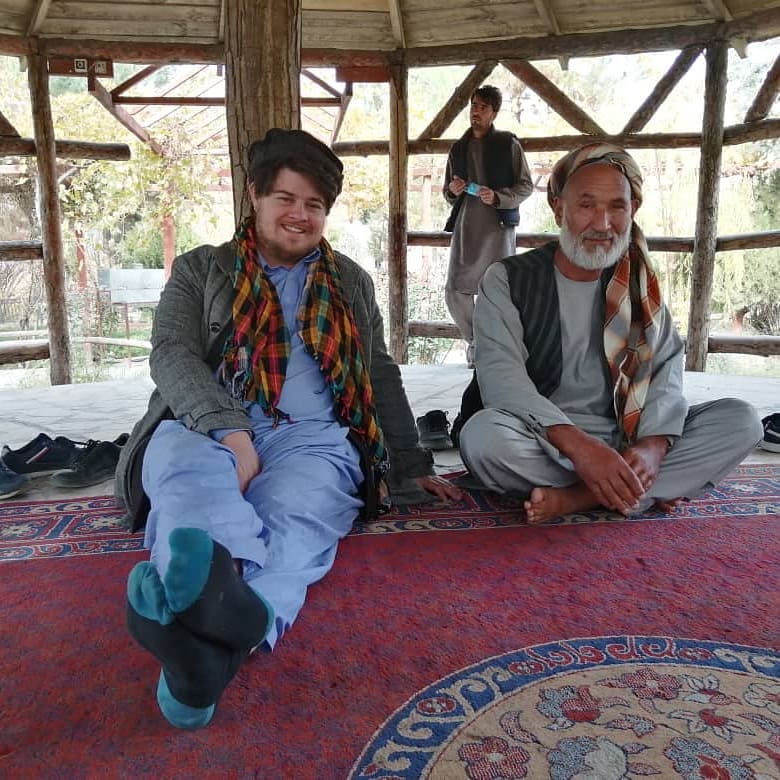Our Cameroon group tours cover one of Africa's most unique countries. Despite what you might have seen in the media, it is in fact safe to travel to this part of Africa. But why is Cameron so interesting? And why should it be on your travel bucket list?
Cameroon is considered to be a mini-Africa. It has representations of most of the different climates and geographies of the continent, as well as it’s unique ethnic makeup, variety of music and cultures, and different cuisines. Most importantly Cameroon is probably most famous for its football (soccer) team.
However, here are 10 very unusual and sometimes downright strange facts about Cameroon that you probably didn’t know.
1) Cameroon is home to the deadliest ever limnic eruption
In 1986, Lake Nyos, a volcanic crater lake, released a massive cloud of carbon dioxide gas in a rare limnic eruption, suffocating 1,746 people and 3,500 livestock in nearby villages overnight. The invisible gas cloud, heavier than air, rolled across the landscape, killing silently. Engineers later installed degassing pipes to prevent future catastrophes, but the event remains one of the world’s deadliest natural gas disasters. No one knows to this day how this even occurred, and it’s only the second recorded limnic eruption in history.
2) The world’s largest frog can be found in Cameroon
Cameroon is home to the Goliath frog, the world’s largest. It grows up to 34 cm long and can weigh up to 3.3 kg. These frogs build their own ponds by moving heavy rocks, a unusual behaviour for an amphibian. Their size and strength make them a bit unsettling to encounter in the wild.
3) Cameroon is home to one of the wettest places on earth
Debundscha Point, near Mount Cameroon, is among the wettest places on Earth, receiving over 10,000 mm (10 meters) of rainfall annually. The constant deluge creates a soggy, almost surreal environment where mold and dampness dominate life, which some might find downright unpleasant.
4) Africa’s deadliest volcano is in Cameroon
Mount Cameroon, the country’s highest peak at 4095 meters, is an active volcano that last erupted in 2012. Mount Cameroon also is the largest mountain in western and central Africa. Its frequent eruptions and the fact that 500,000 people live near it, in towns like Limbe and Buea, create a constant, eerie risk of lava flows and ash clouds.
5) Cameroon was once home to cannibals
Early European explorers, particularly the Portuguese in the 15th century, reported of cannibalism among some Cameroon tribes, and although the Portugese explorers likely exaggerated or misinterpreted ritual practices of the Baka or other groups, it is likely that many people in Cameroon undertook this practice, especially as part of war.
6) It is dangerous to be Albino in Cameroon
In parts of Cameroon, traditional beliefs in witchcraft lead to disturbing practices, including the persecution of albino individuals. Some communities believe albino body parts possess magical properties, leading to rare but horrific cases of violence or mutilation. This is a deeply sensitive and tragic issue tied to superstition which the Cameroonian government is trying to stop.
7) Cameroon is one of the most linguistically diverse countries in the world
Many people will know of the main divide between the French speaking and English speaking parts of Cameroon, however, what many don’t know is that Cameroon is home to 279 indigenous languages. In some areas, people switch between six languages in a single day, including Cameroonian Pidgin English, a “broken” English that can sound bizarre to outsiders. This extreme diversity can feel disorienting, like stepping into a linguistic warped zone.
8) The odd Lobé Waterfalls ecosystem
The Lobé Waterfalls, one of only three worldwide that flow directly into the Atlantic Ocean, support an unusual ecosystem with endangered manatees living in the partly waters. The mix of saltwater and freshwater creates a strange, almost otherworldly habitat that’s both beautiful and slightly off-putting due to its murky, unpredictable nature.
9) Cameroon is fighting a terrorist organisation compariable to ISIS
Since 2014, Boko Haram attacks in northern Cameroon have displaced over 322,000 people and led to brutal violence, including beheadings and kidnappings. The group’s extreme actions, like targeting civilians in markets, leave a grim mark on the region, making it a dangerous and unsettling place for many.
10) Some Cameroonians still use animal parts for traditional medicine
In some Cameroonian traditional medicine practices, animal parts, like snake skins, bird feathers, or even pangolin scales, are used in rituals or remedies, believed to cure ailments or bring luck. While culturally significant, the use of endangered species or the visceral nature of these practices might strike outsiders as distasteful.
Cameroon is many thing, but it is definitely not boring. A unique blend of traditional African and modern European traditions, you’ll never be bored exploring this fascinating country.
If you're interested in travelling to Africa and Cameroon is on your radar, check out our
Cameroon group tours here
on our website. If you want to know more information about Cameroon in general then have a look at our comprehensive Cameroon destination guide.
To book yourself onto one of our Cameroon group tours, send us an email to [email protected] and we will secure your spot!



